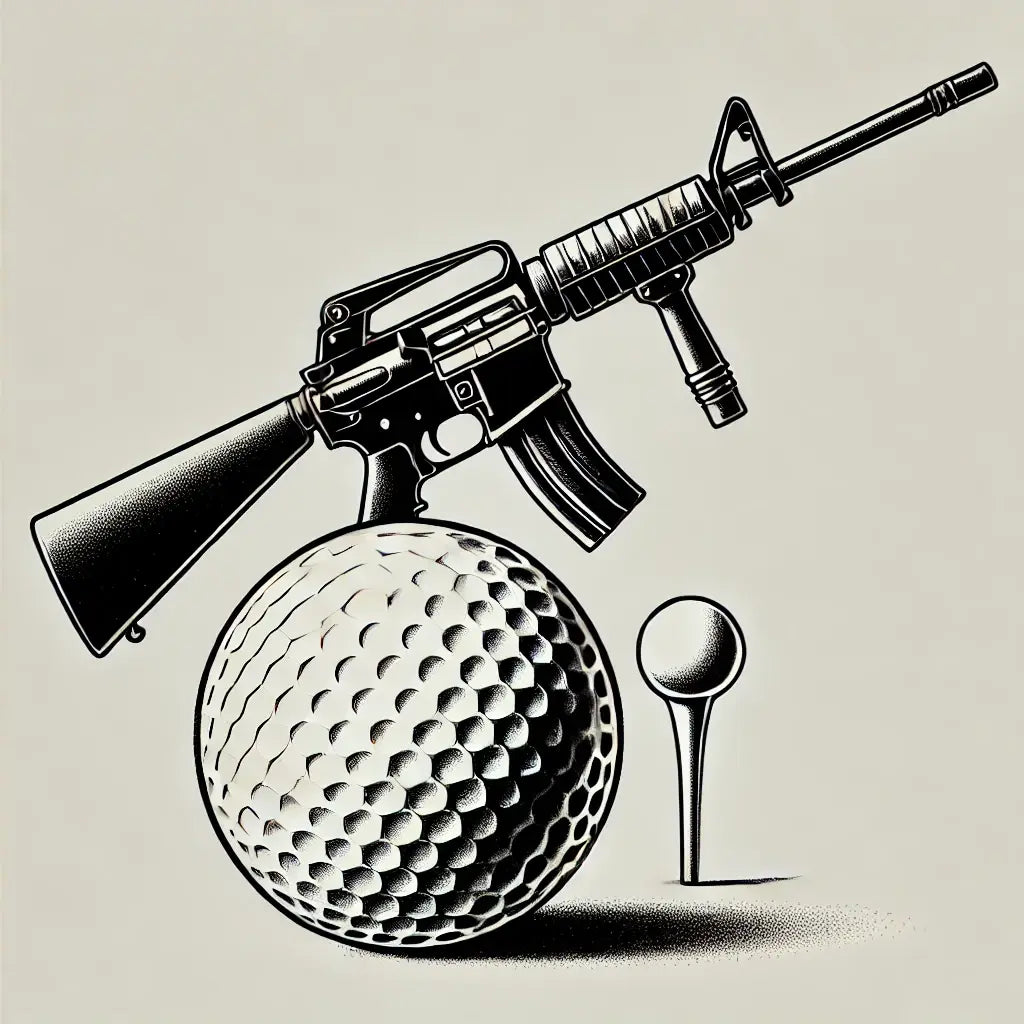
The Unseen Hazard: How War Has Shaped Professional Golf
War and sports have long shared a complex relationship, with one often interrupting, redefining, or even inspiring the other. In the world of professional golf, a sport known for its rich traditions and quiet refinement, the impact of war has been profound. From the halting of major tournaments to the stories of professional golfers who exchanged their clubs for rifles, war has left a lasting imprint on the game, its players, and its global reach.
The Pause of Championships
The clearest example of war’s effect on professional golf can be seen during the world wars, when major golf tournaments like the British Open and the U.S. Open were canceled. Between 1915 and 1919, the Open Championship was suspended due to World War I, while World War II caused a six-year gap in the competition, from 1940 to 1945. The U.S. Open saw similar interruptions, with cancellations in 1917-1918 and from 1942-1945.
These hiatuses not only deprived fans of the sport’s greatest competitions but also disrupted the careers of numerous players. For many, their prime years were spent not on the golf course, but on battlefields, delaying or ending promising careers and robbing the sport of potential legends.
The Soldiers of the Fairways
Some of golf’s most iconic figures served in the military, leaving behind the fairways for the front lines. One of the most notable is Ben Hogan, who served in the U.S. Army Air Forces during World War II. Hogan, whose iron-willed determination later earned him nine major championships, spent his prime athletic years in service, returning to the sport in 1945. His time away from the game did not hinder his success, but it delayed what might have been an even greater career.
Similarly, Sam Snead, another legend of the game, served in the U.S. Navy during World War II. Snead’s service interrupted a flourishing career, but like Hogan, he returned to golf and dominated, going on to win 82 PGA Tour titles. Both players are remembered not just for their accomplishments on the course, but also for their sense of duty off it.
In Britain, Henry Cotton, a three-time Open Championship winner, played a pivotal role in maintaining morale by organizing golf events for troops during World War II. While his playing career was interrupted, Cotton’s influence extended beyond his performance, as he kept the spirit of the game alive in war-torn Europe.
The Courses of War
Golf courses themselves have not been immune to the ravages of war. In many cases, famous courses were repurposed as training grounds or bases for military operations. For instance, Royal St George's Golf Club in England, a frequent host of the Open Championship, was used by the military during both world wars. In the United States, several courses were transformed into makeshift camps for soldiers, while others were used for agricultural production to support the war effort.
The maintenance and preservation of golf courses during wartime became secondary to the needs of the nation, and many courses fell into disrepair, only to be revived in the post-war years. The physical toll that war took on these sacred grounds symbolized the broader disruption to the sport itself.
Post-War Recovery and Growth
After the wars, professional golf experienced a resurgence. In the United States, the post-World War II era marked the rise of golf as a mainstream sport. The economic boom that followed the war fueled interest in leisure activities, and golf courses began to sprout up across the country. This period also saw the beginning of the television era, which brought professional golf into the living rooms of millions.
However, this recovery was not immediate. Golfers returning from service had to regain their skills and rebuild their careers, while courses required extensive restoration. The tournaments, once paused, had to regain their prominence on the sporting calendar.
Golf in Times of Modern Conflict
In more recent conflicts, the impact of war on professional golf has been less direct, though no less significant. The Gulf War, the Iraq War, and the War in Afghanistan have all occurred during times when the PGA and European Tours were in full swing. While no tournaments were canceled, the cultural and economic consequences of these conflicts have affected sponsorships, player travel, and fan engagement.
In 1991, during the Gulf War, the PGA Tour faced a dilemma over whether to proceed with events like the Phoenix Open. With much of the world’s attention focused on the conflict, some questioned the appropriateness of holding a sporting event amidst war. However, tournaments went ahead, though the shadow of global conflict loomed large.
In recent years, professional golfers have also taken part in initiatives to support veterans, with programs like *Patriot Golf Day* raising funds for military families. Many players, including Phil Mickelson and Bubba Watson, have been vocal in their support for the troops, often visiting military bases and participating in fundraising efforts. This intersection of sport and service shows the continued influence of war on golf, not in terms of disruption, but in terms of community and camaraderie.
Conclusion: A Resilient Sport
Though golf may seem far removed from the violence and chaos of war, the two have intersected in ways that have profoundly shaped the sport. War has interrupted the flow of tournaments, altered the paths of players, and even repurposed the courses themselves. Yet, through it all, golf has remained resilient. The sport’s ability to recover, adapt, and thrive in the wake of conflict is a testament to its enduring appeal and the strength of those who play it.
In every golfer who returns from service, in every course restored after wartime, and in every tournament that resumes after years of interruption, golf stands as a symbol of persistence. War may alter the course of the game, but it cannot extinguish the spirit of those who love it.


Leave a comment